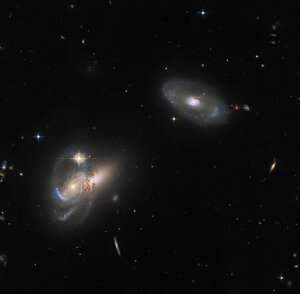Accept all cookies Accept only essential cookies See our Cookie Notice

About ESA
The European Space Agency (ESA) is Europe’s gateway to space. Its mission is to shape the development of Europe’s space capability and ensure that investment in space continues to deliver benefits to the citizens of Europe and the world.
Highlights
ESA - United space in Europe
This is ESA ESA facts Member States & Cooperating States Funding Director General Top management For Member State Delegations European vision European Space Policy ESA & EU Space Councils Responsibility & Sustainability Annual Report Calendar of meetings Corporate newsEstablishments & sites
ESA Headquarters ESA ESTEC ESA ESOC ESA ESRIN ESA EAC ESA ESAC Europe's Spaceport ESA ESEC ESA ECSAT Brussels Office Washington OfficeWorking with ESA
Business with ESA ESA Commercialisation Gateway Law at ESA Careers Cyber resilience at ESA IT at ESA Newsroom Partnerships Merchandising Licence Education Open Space Innovation Platform Integrity and Reporting Administrative Tribunal Health and SafetyMore about ESA
History ESA Historical Archives Exhibitions Publications Art & Culture ESA Merchandise Kids Diversity ESA Brand Centre ESA ChampionsLatest
Space in Member States
Find out more about space activities in our 23 Member States, and understand how ESA works together with their national agencies, institutions and organisations.
Science & Exploration
Exploring our Solar System and unlocking the secrets of the Universe
Go to topicAstronauts
Missions
Juice Euclid Webb Solar Orbiter BepiColombo Gaia ExoMars Cheops Exoplanet missions More missionsActivities
International Space Station Orion service module Gateway Concordia Caves & Pangaea BenefitsLatest
Space Safety
Protecting life and infrastructure on Earth and in orbit
Go to topicAsteroids
Asteroids and Planetary Defence Asteroid danger explained Flyeye telescope: asteroid detection Hera mission: asteroid deflection Near-Earth Object Coordination CentreSpace junk
About space debris Space debris by the numbers Space Environment Report In space refuelling, refurbishing and removingSafety from space
Clean Space ecodesign Zero Debris Technologies Space for Earth Supporting Sustainable DevelopmentApplications
Using space to benefit citizens and meet future challenges on Earth
Go to topicObserving the Earth
Observing the Earth Future EO Copernicus Meteorology Space for our climate Satellite missionsCommercialisation
ESA Commercialisation Gateway Open Space Innovation Platform Business Incubation ESA Space SolutionsLatest
Enabling & Support
Making space accessible and developing the technologies for the future
Go to topicBuilding missions
Space Engineering and Technology Test centre Laboratories Concurrent Design Facility Preparing for the future Shaping the Future Discovery and Preparation Advanced Concepts TeamSpace transportation
Space Transportation Ariane Vega Space Rider Future space transportation Boost! Europe's Spaceport Launches from Europe's Spaceport from 2012Latest

Calling on a galactic neighbour
Thank you for liking
You have already liked this page, you can only like it once!
This image from the NASA/ESA Hubble Space Telescope features the galaxy LEDA 48062 in the constellation Perseus. LEDA 48062 is the faint, sparse, amorphous galaxy on the right side of this image, and it is accompanied by a more sharply defined neighbour on the left, the large, disc-like lenticular galaxy UGC 8603. A smattering of more distant galaxies also litter the background, and a handful of foreground stars are also visible throughout the image.
Have you ever wondered why the stars in Hubble images are surrounded by four sharp points? These are called diffraction spikes, and are created when starlight diffracts — or spreads around — the support structures inside reflecting telescopes like Hubble. The four spikes are due to the four thin vanes supporting Hubble’s secondary mirror and are only noticeable for bright objects like stars where a lot of light is concentrated on one spot. Darker, more spread-out objects like the galaxies LEDA 48062 and UGC 8603 do not possess visible diffraction spikes.
Hubble recently spent some time with our galactic neighbours. LEDA 48062 is only around 30 million light-years from the Milky Way, and was therefore included in the observing campaign Every Known Nearby Galaxy. The aim of this campaign was to observe precisely that: every known galaxy within 10 megaparsecs (around 33 million light-years) of the Milky Way. By getting to know our galactic neighbours, astronomers can determine what types of stars reside in various galaxies and also map out the local structure of the Universe.
[Image description: A faint, scattered collection of cool stars in the form of an irregular galaxy lies right of centre. A disc-shaped galaxy viewed nearly edge-on lies to the left, surrounded by a wide glow. Several smaller galaxies in various orientations cluster around the two. The background is black and mostly empty.]
-
CREDIT
ESA/Hubble & NASA, R. Tully; CC BY 4.0 -
LICENCE
CC BY 4.0 INT or ESA Standard Licence
(content can be used under either licence)

Follow the LEDA

Galactic crash course

LINER on collision course

Ringing in the new year















 Germany
Germany
 Austria
Austria
 Belgium
Belgium
 Denmark
Denmark
 Spain
Spain
 Estonia
Estonia
 Finland
Finland
 France
France
 Greece
Greece
 Hungary
Hungary
 Ireland
Ireland
 Italy
Italy
 Luxembourg
Luxembourg
 Norway
Norway
 The Netherlands
The Netherlands
 Poland
Poland
 Portugal
Portugal
 Czechia
Czechia
 Romania
Romania
 United Kingdom
United Kingdom
 Slovenia
Slovenia
 Sweden
Sweden
 Switzerland
Switzerland

























